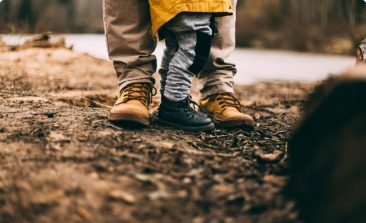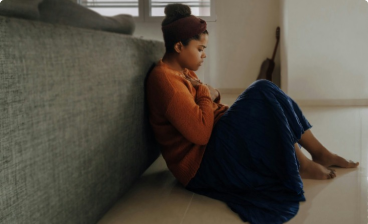Description
During their second year of life, children change from newborns to toddlers. They become more self-reliant in daily tasks like getting dressed and taking off their clothes. They make significant progress in communicating, and throughout the course of the first six months, their vocabulary grows gradually before exploding in the second six months. Most two-year-olds can now construct simple phrases of two words.
To determine whether a toddler is developing as predicted, doctors look at specific milestones. Some children acquire abilities earlier or later than others since there is a wide range of what is regarded as standard. Premature toddlers catch up to milestones later. Always discuss your child’s development with your doctor.
How much will my 2-year-old grow?
After a child’s second birthday, the growth rate slows further. Two-year-olds are very active and are beginning to lose baby looks. While all children can grow at different rates, the following shows the average for 2-year-old boys and girls:
- Weight: Average gain of about 4 to 6 pounds per year
- Height: average growth of about 2 to 3 inches per year
What can my 2-year-old child do at this age?
As your child grows, you will find new and exciting skills developing. While children can progress at different rates, the following are some of the most common milestones your child may reach in this age group:
- Goes and runs fine
- Can jump awkwardly
- Start throwing, kicking and catching balls
- Can stand on one leg for a short time
- Climbs playground structures
- Turns doorknobs and lids
- Starts riding a tricycle
- Builds towers of 10 blocks at age 3
- All 20 teeth appear by the age of 3 years
- The appetite decreases sharply
- Has developed right or left-handedness by the age of 3 years
- Turns pages in a book, one at a time
- Has good thumb and finger control
- Can drink through a straw
- Begins to have bladder and bowel control
- Can still take a nap in the afternoon
- Able to sleep 10 to 12 hours at night
What can my 2-year-old say?
Language development is very exciting for parents as they watch their children grow into social beings who can interact with others. Speech becomes clearer at this age and the child begins to form sentences. While each child develops language at their own pace, the following are some of the common milestones in this age group:
- It says about 200 to 300 words
- Starts putting three words together (subject, verb, object), e.g. B. “I want a ball”
- Names images
- Can name some body parts
What does my 2-year-old understand?
While children may progress at different rates, the following are some of the common milestones that children in this age group can achieve:
- Understands possession, “mine”
- Can say his own age and name
- Knows if he or she is a boy or a girl
- Counts up to three objects
- Can start solving problems
How does my 2-year-old interact with others?
While every child is unique and will develop different personalities, the following behavioural traits that may be present in your child are common:
- Shows independence from parents
- Continues to play alongside others without interacting, known as parallel play
- Acts as if other children are objects or toys
- Doesn’t understand sharing
- Is negative and often says “no”.
- Anger outbursts can last
- Helps with dressing and undressing
Movement and coordination in a 2-year-old
As a child’s mobility improves, so does their ability to examine things they couldn’t before. Take another look around your home from a child’s perspective and update parental controls to protect your child as their skills advance.
How is my child moving?
Around 6 months after taking their first steps, toddlers develop a more mature gait: they can keep their hands at their sides (rather than forward for balance) and move with their feet closer together. They also tend to move their feet in a way that makes them look more like walking—from heel to toe.
During those months of practice, most toddlers spill a few squirts, but that’s part of learning to walk. You can’t protect your child from every fall, but you can reduce the risk of injury by keeping exploring safe areas away from sharp furniture corners and other hazards.
How can I support my child?
Give your child plenty to do and see. Go for walks in your yard and neighbourhood, or visit a local playground. At home, you can build an obstacle course out of pillows or boxes and encourage your child to run, climb and crawl. Buy some balls to kick and throw. Experts recommend toddlers:
- Get at least 30 minutes of structured (adult-led) physical activity daily, such as B. playing on the playground, going for a walk or taking part in a parent-child tumbling course
- Get at least 1 hour of unstructured free play every day where they can explore and play with toys
- Being inactive for no more than 1 hour at a time, except when sleeping
- Have indoor and outdoor spaces that meet or exceed recommended safety standards for all of their activities
- As their physical skills develop, toddlers also learn to use their hands more. There are many toys and craft supplies that can help your 2-year-old in this area. Some include:
- Paper and coloured pencils
- Shape dough
- Stack toys that kids can build and knock over
- Simple puzzles
How long should my 2-year-old sleep?
Toddlers have a growing imagination and become more aware of their surroundings. This can start to disrupt their sleep. A 2-year-old child needs about 10-12 hours of sleep at night and 1-4 hours of naps during the day. This can include 1 or 2 naps a day and will vary depending on how your toddler behaves on both naps. For example, if they’re fighting off morning naps, they might just be ready for an afternoon nap.
You might also like
Parenting Updates: Subscribe Now!

ALL UPDATES
Go from pregnancy to adolescents with our email bulletins, loaded with reasonable, modern data about bringing up youngsters and taking care of yourself as a parent.
SUBSCRIBE NOW
MOVIE REVIEWS
Find the best motion pictures for your family with our youngster amicable surveys. Search new deliveries and more seasoned motion pictures by age, rating and type.
SUBSCRIBE NOW
MENTAL HEALTH RESOURCES
Is it safe to say that you are an expert working with families? Get data about kid, adolescent and parent psychological well-being and prosperity.
SUBSCRIBE NOW











































